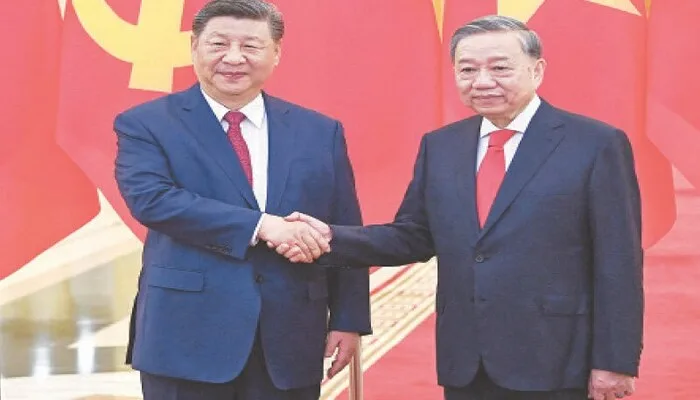In a fresh twist in the ongoing US-China trade war, President Donald Trump has reversed an earlier exemption on smartphones and other electronics. Days after US authorities announced that devices like smartphones and laptops would escape new import duties, Trump declared that they were not exempt but rather reassigned to a different tariff category. This unexpected pivot deepens uncertainty for tech companies and global markets.
Smartphones Now Face Semiconductor Tariff
Initially, US customs documents revealed that smartphones and computers would be excluded from the 125 percent tariff on Chinese goods.
This shift means these electronics will still face new financial pressure, just under a different label. US Commerce Secretary Howard Lutnick confirmed that the devices will now fall under the broader semiconductor tariff, adding that more details will be announced soon. He emphasized the importance of bringing critical industries like electronics and medicine back to the US, stating, “We need our semiconductors and electronics built in America.”
Impact on Tech and Consumer Markets
Smartphones, laptops, and similar devices rely heavily on semiconductors — the core components of modern electronics. With Trump now targeting the entire electronics supply chain under the banner of national security, the burden on tech companies may grow heavier.
This about-face has sparked confusion in financial markets. European indices, which had earlier rebounded on the assumption that these electronics would be spared, now face renewed uncertainty. Industry experts warn that the policy instability could disrupt supply chains and increase consumer prices across the globe.
Read: NATO Chief Makes Surprise Visit to Ukraine Amid Sumy Attack Fallout
China Reacts with Caution
Beijing initially described the tariff exemptions as a “small step” in easing tensions. However, the Chinese Ministry of Commerce quickly moved to reassess the implications of Trump’s comments. With the US now appearing to backtrack on earlier concessions, the likelihood of a deeper economic standoff rises.
Meanwhile, China has already imposed retaliatory tariffs on US goods, increasing rates to 125 percent. These moves have targeted American exports, especially in sectors like agriculture and manufacturing, amplifying the impact on US businesses.
Xi Jinping Rallies Regional Support
In response to the escalating trade war, Chinese President Xi Jinping is bolstering regional alliances. During a visit to Hanoi, Xi called on Vietnam to join China in opposing what he termed “unilateral bullying” by the United States. Speaking to Vietnam’s Communist Party leader To Lam, Xi stressed the need to preserve global supply chain stability and protect the free trade system.
Xi also authored an article in Vietnam’s state-run Nhan Dan newspaper warning that protectionism yields no winners and only fuels global instability. His message seeks to position China as a reliable alternative to what he calls an erratic US trade approach.
Vietnam Seeks Stability Amid Rising Tensions
Vietnam is navigating carefully amid rising US-China tensions. With Hanoi currently facing the threat of a 46 percent US tariff—set to take effect in July—it has a strong incentive to maintain balanced relations with both powers.
In the first quarter of 2025, Vietnam imported around $30 billion in goods from China, while exporting $31.4 billion to the United States. This tight trade balance places the country at the center of global supply chain shifts sparked by the tariff war.
Follow us on Google News, Instagram, YouTube, Facebook,Whats App, and TikTok for latest updates
